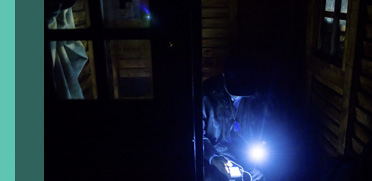
Investment views
Eskom investment impact
- Load shedding is no longer a thing of the past and its unpredictability makes it harder to manage
- The impact on confidence of loadshedding is meaningful, and that longer term this undermines investment and growth.
- Large enterprises can afford to mitigate some of the effects; the real pain is felt by the SME sector
- The impact on infrastructure integrity is significant
- There is risk for local counters such as discretionary retailers and propert
WHILE THE ANNOYANCE and frustration of dealing with load shedding has impacted all of our personal lives, the impact on the economy and the investment climate is of far greater concern. There was a rude awakening in December 2018 when the spectre of renewed load shedding arrived, something we all believed had been done away with in 2016. And its impact was immediately felt in the most important month in retailer’s lives, the December holidays.
SENTIMENT
The unannounced arrival and high level of load shedding had a hugely detrimental impact on the psyche of a consumer who was already struggling to deal with a year that included increases in VAT, interest rates and municipal rates; numerous commissions detailing allegations of vast corruption across the country; and the continuous job shedding that was the inevitable result of the above factors on our stretched economy. While South Africans are generally resilient and have dealt with many challenges in the last decade rolling blackouts and the inability to indicate for how long they will last, have further undermined the South African consumers’ confidence in the future. The net result of this is a significant curtailment of consumption expenditure and capital investment.
Whether it is being less inclined to eat out or purchase an additional item of clothing, or delaying a new car purchase or a home upgrade (except for buying solar panels and a battery) the lack of confidence derails spending. This then obviously impacts heavily on the various businesses providing these services and products, resulting in fewer sales, lower profits and potential losses. This in turn could lead to further job cuts and potential insolvencies. The classic negative reinforcement spiral downwards, which will be tough to arrest without some kind of external input.
The high levels of emigration that have become evident in 2018, are also likely to remain elevated by fears over the future of the power system in the country, further eroding the consumer and tax base in South Africa. So, while sentiment is not something tangible, it undoubtedly has an enormous effect on the economy from the consumption side. This then feeds into corporate investment, as companies that see no growth in the local environment will not invest in further capacity, since there is no investment case to be made for, or return to be generated from, this additional investment.
PHYSICAL IMPACTS
The rolling blackouts arrived suddenly and without warning but, due to our experience from earlier in the decade, we have established systems to deal with them. Individuals and corporates quickly became accustomed once again to factoring the daily schedules of load shedding into their lives. Some businesses are able to handle the daily shedding better than others.
Generally, industrial customers who operate directly on the Eskom grid and who are advised well ahead of time as to the level of load shedding coming, can adjust their processes to factor this in. They can take steps to ensure that no energy intensive processes are scheduled for the down time, nor energy-intensive processes are in progress when the power drops, or that they have enough back-up power to handle these fluctuations. This does not mean there is no negative effect, as efficiencies are impacted by having to move processing around, and the cost of overtime, back up facilities and running power off diesel as opposed to grid power all come at a significantly higher cost, which either gets passed on to the ultimate end consumer, or borne by the company itself, putting its own profitability under pressure. In the difficult consumer environment that we find ourselves in, the ability to pass costs on to the consumer has been very limited, so in most cases these costs are being borne by the companies, resulting in more cost cutting, job losses and ultimately corporate failures. Industrial customers operating on municipal grids are not so fortunate, and generally suffer the same vagaries of load shedding as the typical residential customer.
In the retail environment, there is obviously less mitigation that companies can implement. If the power goes down during key sales periods like lunch time and late afternoon, there is no way for them to capture sales from consumers who will not come back at a later time. The restaurant and quick service restaurant industry is particularly exposed here. While many individual retailers have implemented their own back-up power generation, particularly those with cold chains to protect quality of fresh foods, the fact that the overall shopping centre is dark, or that streets are gridlocked, will still deter any potential shopper from venturing out to find the one shop that still has its lights on. This impact will clearly also be felt by the various landlords, as lower sales put pressure on rent renewal agreements, and those that do put in additional back-up power sources need to fund this and attempt to collect these additional costs from their tenants.
As with the industrial sector, the mining industry is more flexible in dealing with the fluctuating power supply and, as massive customers of Eskom, generally get a better line of sight into coming outages. As important drivers of the economy and large paying customers they are also receiving better consistency of supply, although when Stage 4 load shedding hits, they also suffer rolling outages and, if this becomes the norm, it will definitely have an impact on their ability to produce at current levels.
Those companies that will feel the brunt the most are the various small to medium enterprises (SMEs) of all types of industry that do not have the balance sheet to be able to put in place alternative measures to handle power outages. Drive down the main street of any town during a power outage and you will see the multitude of small service outlets, be it hair salons, take-aways, and small retailers, that cannot function without power, but cannot afford to implement alternatives.
COSTS
As is evident from all the above, load shedding comes at a significant cost. Ignoring the fact that Eskom needs to pass through significant price increases over the next few years to recover the costs of the enormous debt that they have built up over the past decade, electricity consumers have to incur additional costs to deal with security of supply. Most companies we have spoken to indicate that the cost of using diesel generation is three to four times that of current Eskom power. This ignores the significant capital outlay required to buy additional generation capacity in the first place. Energy intensive industries, where power is a large part of their cost base, will obviously feel this the most. For example, gold mining companies, which require significant ventilation and cooling deep underground, 20% of their cost base is electricity. If this grows at double digits for three to five years it erodes margins massively in an industry already under significant pressure.
What is important to know for industry, is the extent of the problem and its likely duration. Short- term and mainly Stage 1 or 2 load shedding will require a significantly different response than multi-year Stage 3 and Stage 4 load shedding would.
While the above deals with risks posed by power generation, it is becoming increasingly evident that there are major issues looming on the transmission side. Over the years Eskom has underinvested in this network as maintenance and refurbishment plans were cancelled. Even when it is in a good state, the transmission network is not designed to handle the repetitive on/off fluctuations of power very well and in its reduced state we have seen numerous sub-station failures. In addition, in a country where cable and metal theft is rampant, having long periods where cables and equipment are not carrying live current has seen a dramatic uptick in cable theft and vandalism. The cost of this replacement is often picked up by the various municipalities and needs to be recovered by additional increases in electricity prices or overall rates charged.
CONCLUSION
Given the above, our investment stance has remained one of caution on the from a South African economy, and any recovery is likely to be slow. From a South African equity perspective, we are avoiding discretionary-spend retailers and businesses that are heavily reliant on the growth of the overall economy. Our large exposures remain global businesses listed on the JSE and where we can find value in defensive South African businesses, such as non-discretionary retailers and healthcare businesses. In addition, we remain exposed to both global as well as local miners where operating fundamentals are robust enough to deal with the impact of load shedding.
In South African fixed income and property, we have increased our exposure to bonds after a long period of owning very little in these asset classes. While still remaining underweight and concerned about the fiscal situation given low growth and state-owned enterprise debt, we feel that real rates of return are attractive, as we have seen 10-year bonds sell off to yields in excess of 9%, while inflation has been steady in the 4% to 5% range. Property faces more significant risks of negative reversions and lower inflation-linked increases from tenants, while at the same time having to deal with higher costs and municipal rates, making it less attractive in this environment.
 United States - Institutional
United States - Institutional


